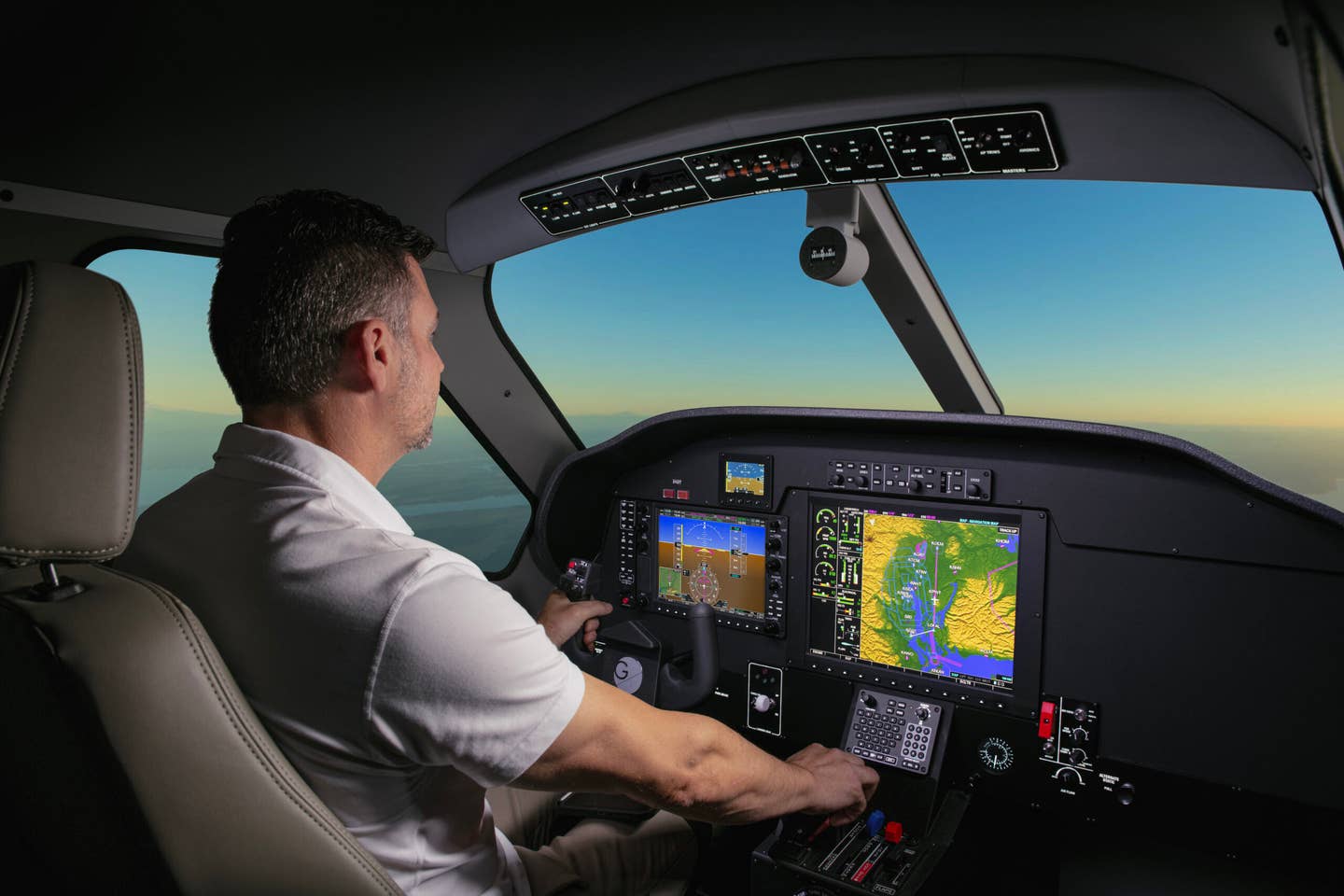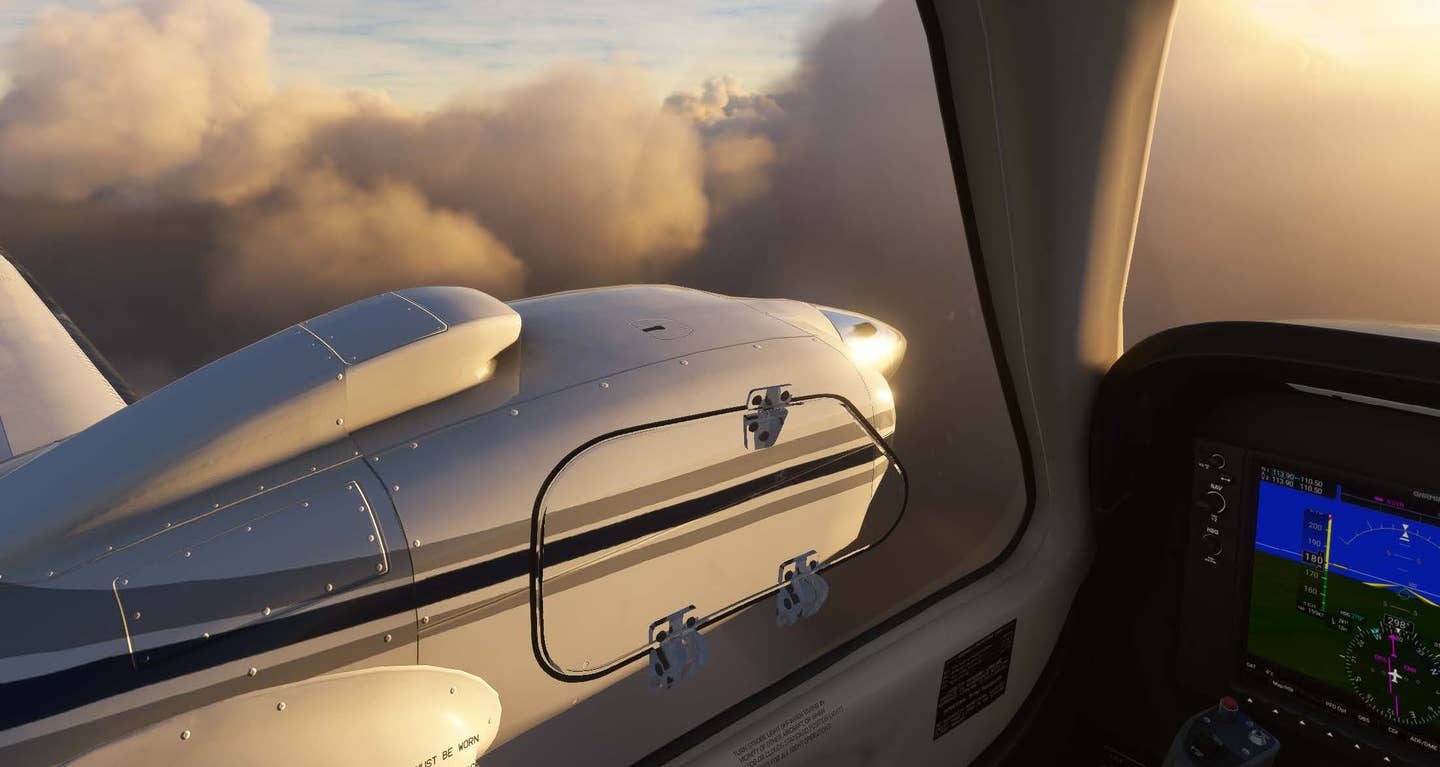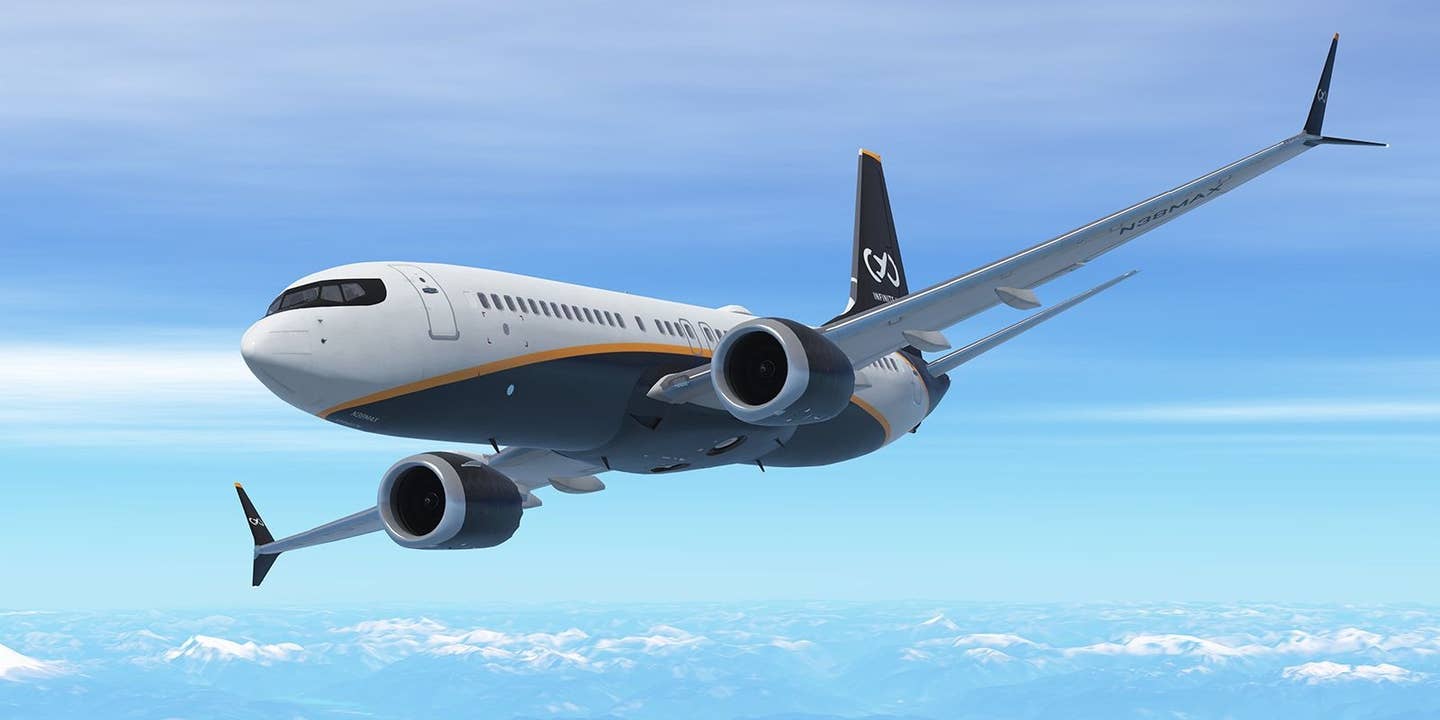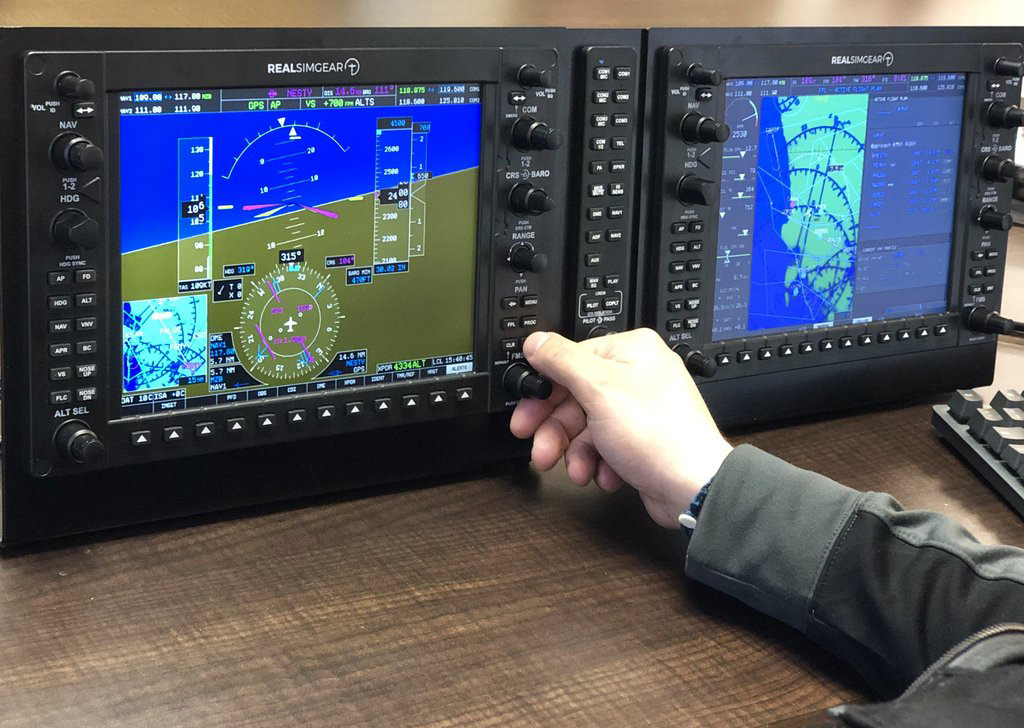Navigating Telluride’s Box Canyon Runway, Virtually
Microsoft Flight Simulator and X-Plane offer opportunities to pregame a risky airport landing and departure.
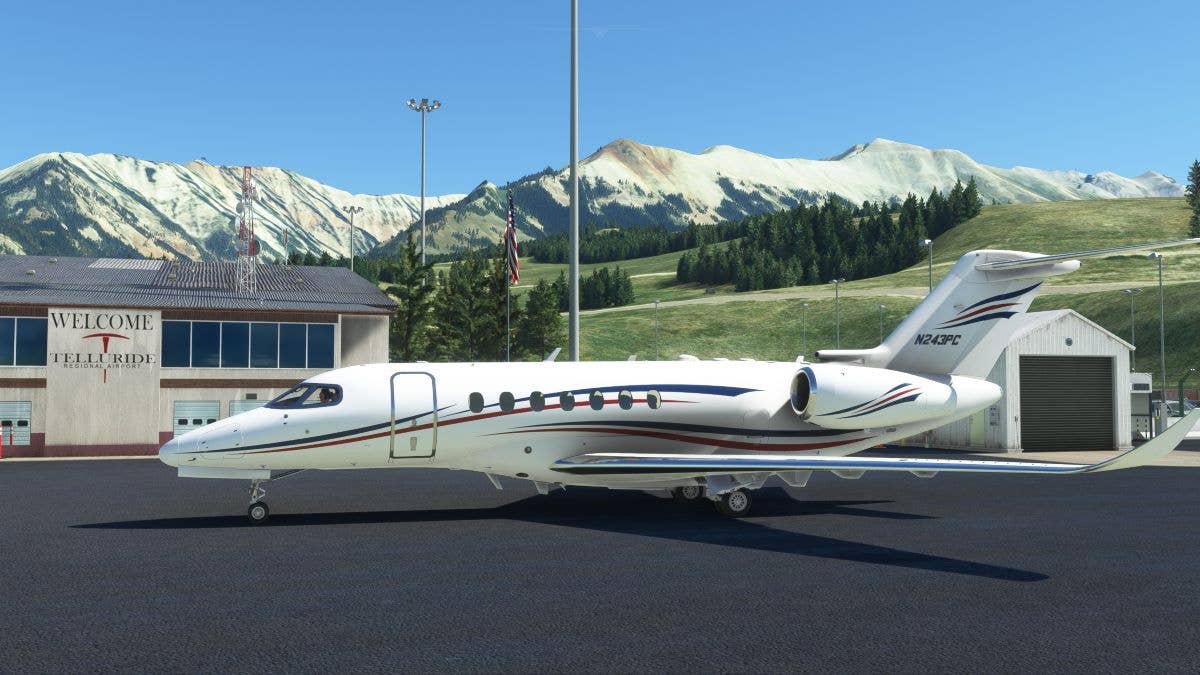
The MSFS2020 Citation Longitude after parking at the GA ramp. [Image courtesy of Peter James]
Ever since I can recall, way back as a teenager staring at sectional charts, I dreamed of the day I could actually see those places in person. Telluride, Colorado, was always a mysterious, mythical place that I wasn’t sure I would actually visit in real life. That was until this month when I had a flying assignment to Telluride Regional Airport (KTEX). Weeks of mental planning, and some sim time in and out of this incredible place paid off.
The restrictions to this airport are many—and for obviously good reasons. No night ops, no tailwind arrivals over 10 knots, which is standard for most jets. You land on Runway 9 and depart Runway 27. The box canyon at the end of 9 makes the departure path pretty scary at best. And landing on 27 would be equally risky.
During my trip, my hotel balcony was perched at Mountain Village, high up, overlooking the valley and runway. I was on the approach path to 27, and I watched Pilatus PC-12s and Citation CJ3s or -4s going onto 27. In fact, the day we arrived, we couldn’t land, as a Gulfstream GIV in front of me went missed because of the tailwinds on its final approach to 9. We followed his diversion to the alternate—Montrose Regional Airport (KMTJ).
I wanted to showcase this neat place in both X-Plane 12 (XP12) and Microsoft Flight Simulator 2020 (MSFS2020). They both accurately replicate the excitement and experience along with the terrain. The runway dip and odd slope are also recreated well in both sims. Coming in for a landing the normal way on 9, you’ll be riding down an open canyon with high terrain on either side. The steep valley below is home to the main highway to Telluride. The airport sits on a bluff on a dramatic 1,000-foot cliff above the road below. This is stunning and hard to not stare at while piloting.
Coming in over the sudden rise to the runway can cause some ground proximity warning systems to go crazy, or in our case in the real jet, suddenly go from “500” to 50, 40, 30, 20, 10 like that in a flash. The floating sensation is real, as you’re above a downhill runway at first, then if you don’t get it on soon enough, it’ll turn into an uphill run on the far end.
I fly a Bombardier Challenger 300 in real life—sadly none exist currently for XP12—but the HotStart CL650 is the greatest corporate jet ever modeled for any flight simulator platform, in my opinion. Its was great fun operating this airplane in and out of KTEX. You can get the amazing add-on here.
The density altitude is well replicated in both sims. As long as you’re flying a quality add-on that simulates good engine realism in props or jets, you’ll be able to notice the lack of air compression in a prop, weak acceleration, etc. In the jets, takeoff numbers will grow and the FADEC-controlled engine settings will reflect the performance limitations, plus the more sluggish reactions.
Even in the default Longitude in MSFS2020, there was a "cabin high" warning as we had in real life. Most bizjets don’t like cabin altitudes greater than about 9,000 feet msl. Certainly our Challenger 300 didn’t, and this is simulated on both the aircraft I tried in XP12 and MSFS2020. I even tried a Boeing 737-800 to see how it handled into KTEX and, performance wise, it had no problem. KTEX is not necessarily too short for an airliner—it’s mostly the altitude that affects everyone, and high terrain makes maneuverability an issue in the box canyon to the east, preventing landing on 27.
Squeezing a 737-800 into KTEX was not overly difficult at all. The parking area was only a little small. It had just rained a bit, with the XP12 puddling and water shine looking amazing.
XP12’s blowing dust simulation was great, powering up the CFMs to takeoff thrust on Runway 27. The box canyon towering over the town to the east has walls of rock that rise to above 12,000 feet in the distance. A go-around off of 9 could be deadly, as well as an approach to 27. Density altitude is a factor for any aircraft at this high starting point.
The MSFS2020 Longitude sitting in the same position to compare sim versus real in these pictures taken together.
A real NetJets Longitude showed up as well, adding to the comparison fun in this photo with the MSFS2020 Longitude shown above.
The XP12 CL650 looks realistic too in the same parking perspective.
As you can see, the scenery in both sims does a great job in giving you the feel of reality and what the actual airport has in store if you fly there. If an engine should fail on a turbojet on the way out of 27, we would basically follow the canyon and highway out without much worry. It’s a visual maneuver and not one you can do legally IFR, unless the aircraft manufacturer allows it or you have a predetermined “escape path” on a chart or performance-based document that is legal for your operation. Common sense throws out any IFR operation to and from here. Flying a light twin, you would probably lose some altitude on takeoff before feasibly climbing out of the canyon below on the departure corridor of 27. It’s definitely a place to set up unpredictable emergencies into either sim for some fun and fright.
I could easily spend most of the day doing multiple takeoffs and landings in and out of KTEX. It is so much fun—and what a challenge. I am only showcasing bizjets and a 737, and can only imagine how different this would be in a piston single.
Recently, a fatal accident occurred in a Beechcraft Bonanza from a summer sightseeing trip. The airplane went down near the town over the box canyon to the east in an accelerated panic stall, spin. The density altitude was high, a result of the summer temperatures combined with the high field elevation. It's something to consider re-creating in either sim and testing yourself on the outcome or factors leading up to the unfortunate ending.

Sign-up for newsletters & special offers!
Get the latest FLYING stories & special offers delivered directly to your inbox

